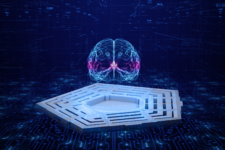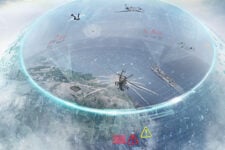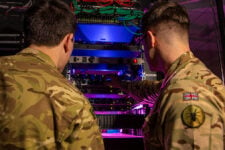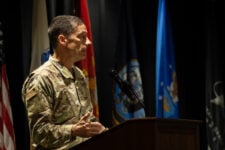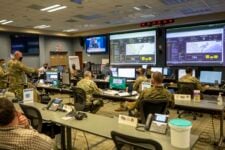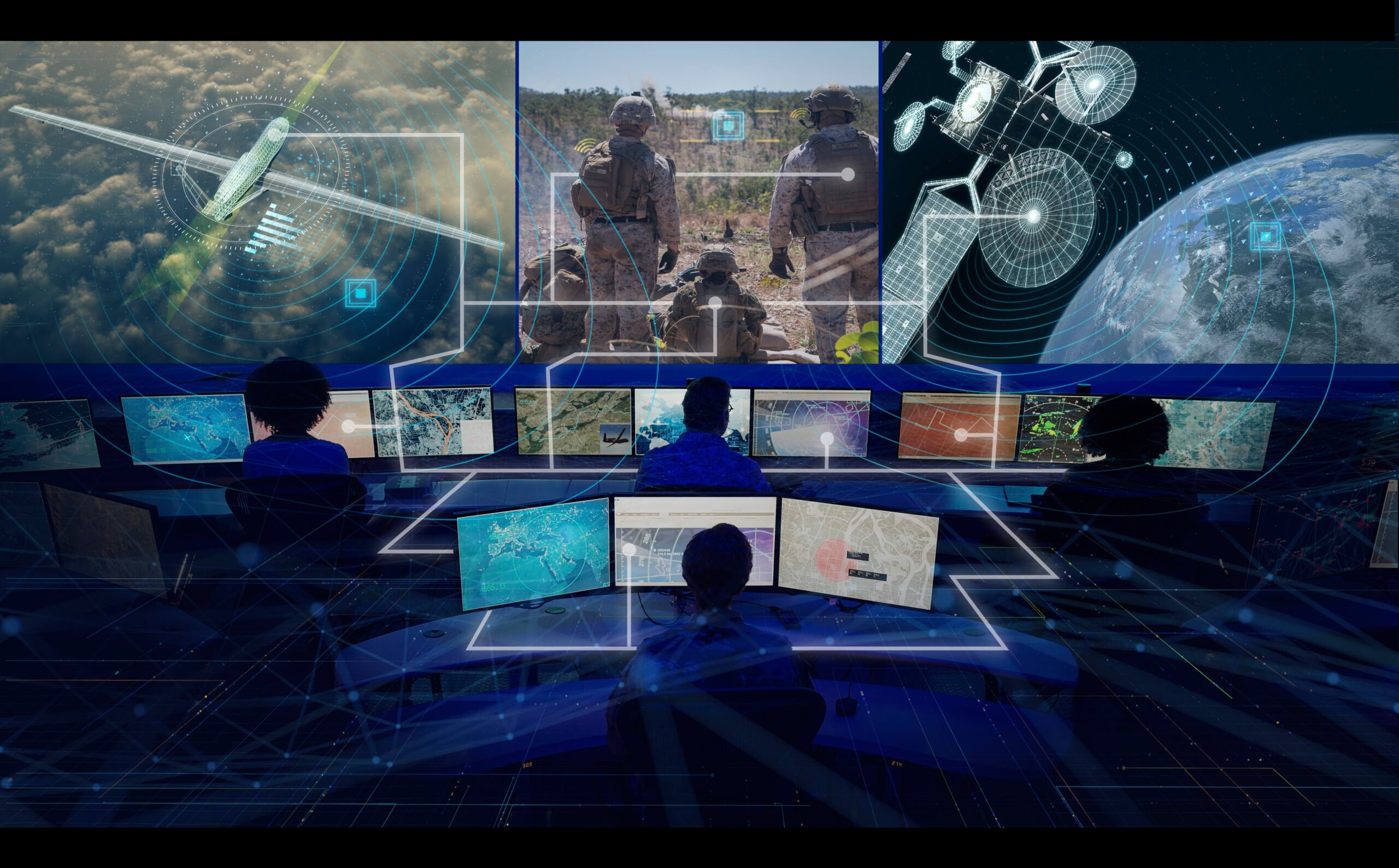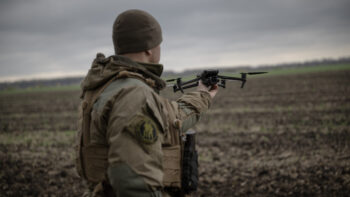Protected satcom, gateway communications, airborne C2ISR, multi-functional/multi-spectral sensors, battle management command and control, autonomous systems, and assured Position/Navigation/Timing (PNT). When they operate individually as they historically do, they are limited in their ability to help the U.S. military train and fight as an integrated team. Operating in toto, however, these make up some of the foundational, enabling technologies that will meld together military services under Joint All-Domain Command and Control (JADC2).
What these technologies all have in common as part of JADC2 and the DoD’s greater Joint Warfighting Concept is that each generates data—be it data, voice, or video—requiring management and real-time sharing across services and warfighting domains.
“The simple requirement will be from this day forward, all data produced by the Department of Defense, all data produced by every weapon system in the Department of Defense will be accessible, period,” said Vice Chairman of the Joint Chiefs of Staff Gen. John Hyten in May. “It has to be that way. There can be no other alternative. And the reason it has to be that way is because without that data, and without that data accessibility, we will not achieve the speed that we need to deal with the future that we face.”
It is the exposure to data and how data gets exposed to different interfaces, applications, humans and otherwise that is the beating heart of JADC2.
“When we think of data exposure, we’re talking about exposing the interfaces of the legacy systems, as well as new and emerging systems, to allow that data to come to a common place where it can be used by an algorithm for artificial intelligence/machine learning (AI/ML) for either processing or tipping and cueing for other systems,” said Sarah Schellpfeffer, technology fellow at Northrop Grumman. “Or it can go to a display, a common operating picture, or a command center. And when there’s onboard processing at the collection point, the data can also be disseminated as-is to the iPhone of a warfighter in theater, for example.”
Exposing data in a JADC2 environment also means exposing it at every possible level of security classification. For example, this lets an Air Force pilot see real-time aircraft health, usage, and performance data on the high side of security, and a maintenance technician sees it downgraded to a lower security level so it can be viewed on a rugged laptop in the hangar.
The challenge is two fold. First is understanding how different platforms for communications, C2, and intelligence, surveillance, reconnaissance (ISR)—to name a few— collect and move data around within their own digital walls. Then it’s a matter of taking these historically stovepiped systems or systems built for a specific purpose, mission, or individual military service and making its data available to the world outside of that initial scope.
Accomplishing both gives military personnel the power to acquire data where they need it, when they need it, and on the timeline they need it.
Networking, Communications, Cloud
There are a variety of JADC2 enabling technologies that facilitate the exposure of data. At the top of the list are networking and communications. Space communications is a major part of that as it provides mobile access and persistence, and makes global JADC2 possible, particularly protected Milsatcom. Assuring that JADC2 has a rock-solid communications infrastructure that is not stovepiped and cannot be degraded by adversaries are essential steps for all-domain operations. Northrop Grumman provides important all-domain capabilities for strategic deterrence, secure communications, missile warning, and missile defense.
Networking exists in a variety of different layers: terrestrial and airborne columns, tactical data links, and weapons links to name a few. The JADC2 concept and architecture can also be looked at as the “internet of military things” as it represents all of the technology insertions and modernizations that have to happen in order to create the cross communications and networking required for JADC2.
Other data-related enablers include cloud migration, and the modernization of software and system tasking, processing, and dissemination of data from myriad sensors deployed across warfighting domains. Stitching all that data together is the battle management command and control and AI/ML.
“It’s a combination of the exquisite technology that the government has been procuring for many decades and the protected interfaces across which the data flow through the JADC2 infrastructure, which are enabled by common networking, cloud and edge, as well as battle management command and control,” said Schellpfeffer.
“Timeliness is the game changer here and why JADC2 requires these enabling technologies, as opposed to just modifications of doctrine, for example. It’s the exposure of data and the support of AI/ML to make sense of it that makes it possible to put good intelligence in front of a human for a decision. That helps drive the need for a doctrinal change because you’re able to do things on much shorter timelines and with different CONOPS (Concept of Operations) tactics or procedures than you would historically be able to do with separated systems without access to each other’s data.”
JADC2 is Built on Legacy
JADC2 is not a new, up-from-the-ground project like a new aircraft platform (though some new starts like Northrop Grumman’s B-21 Raider stealth bomber will play a key role in JADC2 and strategic deterrence). Rather, its foundation lies upon numerous legacy systems.
This hits upon one of the main challenges of the migration to JADC2: the DoD can’t ignore all the systems and operations it is conducting with legacy technology right now as they are critical to how the U.S. operates and defends itself.
As discussed, the modernization of these systems is dependent on modifying the interfaces to those systems, not the systems themselves necessarily, so that the important data coming off those legacy systems can interface with the existing network architecture and the cloud. This simplifies how legacy and emerging architecture can work together without a wholesale revision of an architecture or a change to an existing program of record.
“While I recognize the need to focus on the future, I think our current fleet of highly capable systems will continue to play a valuable role for U.S. and international forces, and also in being the pathfinders to many of these advanced capabilities that we are developing,” said Jane Bishop, sector vice president and general manager of the Global Surveillance division.
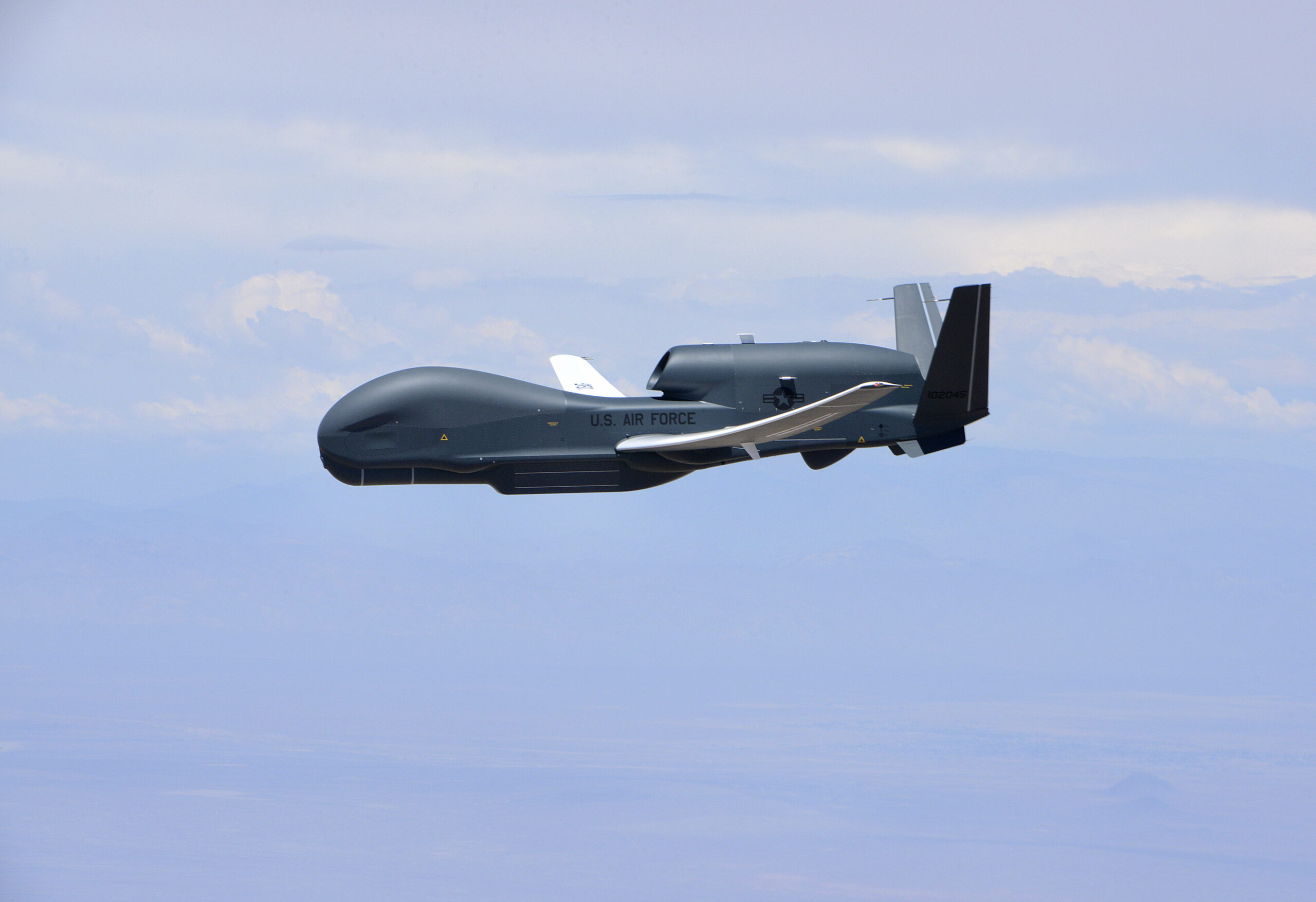
Autonomous systems like Global Hawk are the pathfinders to development of advanced capabilities for JADC2.
These platforms include autonomous systems like the Global Hawk—the High-Altitude, Long-Endurance (HALE) system for the United States Air Force, Japan, Korea, and NATO—along with Northrop Grumman’s HALE maritime platform Triton that is currently deployed with the United States Navy and soon in Australia. They also include ship-based systems such as the vertical takeoff and landing MQ-8C Fire Scout, as well as manned systems like the E-2D Advanced Hawkeye airborne early warning (AEW) system. Rapid modernization is making systems within Bishop’s Global Surveillance portfolio even more vital to U.S. combatant commanders and allied forces.
“We’ve been very much focused on increasing connectivity,” which will help us increase the effectiveness of our existing systems,” said Bishop. “The robust ISR payloads that our platforms have today provide such a vast amount of rich data. But it’s more data than a human can process in an efficient and effective manner.”
She cites the work that the company is doing with tactical decision aids, and the application of AI/ML to discern the intelligence that comes from shared data. These are technologies that help the user quickly boil down the sea of data into actionable information that leads to better mission outcomes in all theaters of operation.
The evolution of the E-2D is a good example of a legacy system that has matured over time to better support maritime operations and data management. Introduced in the mid-1960 as strictly an AEW platform, today the Hawkeye is viewed as a quarterback for the U.S. Navy, giving the warfighter expanded battlespace awareness, especially in the area of information operations delivering battle management, theater air and missile defense, and multiple sensor-fusion capabilities in an airborne system.
Open Systems, Interoperability, Resiliency
Many of the requirements around JADC2 relate to interoperability— the ability to task, sense, detect, and manage in order to decide and act in a secure manner. That means one thing: open, modular architecture for systems operating in all warfighting domains.
“Northrop Grumman ensures that we achieve this through truly platform agnostic capabilities that can link both new and legacy platforms with security and resilience built in,” said Ben Davies, sector vice president and general manager of Northrop Grumman’s newly established Networked Information Solutions (NIS) division. “Being able to do both the translation between previously siloed platforms and provide communications links in real time ensures that platforms can communicate across domains.”
This was the raison d’être for standing up NIS, which is bringing together the critical enablers such as secure communications and networking, advanced and secure processing, full-spectrum cyber capabilities, and AI/ML.
“The reason we’re doing this is to ensure that these solutions, as we enable both Northrop Grumman and non-Northrop Grumman platforms, are aligned around seamless integration and an open architecture that provides the overmatch advantage that our customers need from us,” said Davies.
This is essential as JADC2 requires disparate sensors and platforms to interface and work together on a timeline that just has not been possible before. And if there isn’t an open architecture framework for that to happen, it won’t happen because the cost to the government of integrating proprietary systems will be too high.
“The government has accomplished a lot in the area of creating successful standards and CONOPS through a variety of public-private consortia,” noted Schellpfeffer. “Our position is that the same would have to apply here. Industry needs to work in partnership with the government on open standards and open integration, as opposed to those standards being dictated by industry and architectures developed only for a specific solution.”
Another important factor to consider in addition to interoperability and open systems is resilience. U.S. and coalition forces controlled the skies during the Global War on Terror, but that is no longer the case as near-peer and peer competitors have fielded advanced air defenses.
“Many of our platforms are designed to operate in a permissive environment,” said Bishop. “But that does not mean you can’t operate as an important node near a non-permissive environment. Our roadmap is being shaped for enhanced survivability. We’re studying our platforms and our sensors’ ranges and comparing them to the range that a shooter’s sensor might have. Increasing survivability will allow these systems to be effective well into the future.”
Last year, the Center for Strategic and Budgetary Assessments (CSBA) outlined a “deterrence by detection” operational concept to deter peer threats, one that uses a network of existing non-stealthy long-endurance, autonomous aircraft to maintain real-time, persistent situational awareness in key geographic areas in the Western Pacific and Eastern Europe.
In many ways, Triton and Global Hawk already play this role today, providing a significant percentage of ISR collection and comms-relay activity around the world, including against near-peer threats. As this report notes, UAS detection gives you awareness faster and without ever putting a flight crew at risk. Early detection of, for example, territorial incursions, gives you more time to choose and enact response options, an important capability in a JADC2 environment.
Being able to play this role means a focus on both resilient communications systems and assured PNT systems. It also requires an ability to operate in an electronic-attack environment while at the same time protecting against cyberattack. “Those are some of the things that we’re doing to continue to burn down risk going forward,” Bishop said.
Conclusion
JADC2 is a critical capability for the country and the joint service, and Northrop Grumman is committed to partnering with the government to meet the challenges of providing a modern, open-architecture approach to emerging CONOPS and requirements for all-domain operations.
Critical technologies like the network are the enablers that will be the key to the success of the Defense Department achieving its JADC2 objectives. From Northrop Grumman’s perspective, there also can’t be success with JADC2 without shared data and shared awareness that can be distributed across vast areas like sea and space.
To meet that end goal, the company is providing mission engineering, technology, and end-user integration to bring together legacy systems with the modern architectures that are required for on-demand operations.


